Jeremy Johnston
Semi-Blind Multi-Tag Ambient Backscatter Communications Using Radar Signals
Jun 14, 2024Abstract:In this work, we consider a backscatter communication system wherein multiple asynchronous sources (tags) exploit the reverberation generated by a nearby radar transmitter as an ambient carrier to deliver a message to a common destination (reader) through a number of available subchannels. We propose a new encoding strategy wherein each tag transmits both pilot and data symbols on each subchannel and repeats some of the data symbols on multiple subchannels. We then exploit this signal structure to derive two semi-blind iterative algorithms for joint estimation of the data symbols and the subchannel responses that are also able to handle some missing measurements. The proposed encoding/decoding strategies are scalable with the number of tags and their payload and can achieve different tradeoffs in terms of transmission and error rates. Some numerical examples are provided to illustrate the merits of the proposed solutions.
Radar-enabled ambient backscatter communication
Aug 15, 2022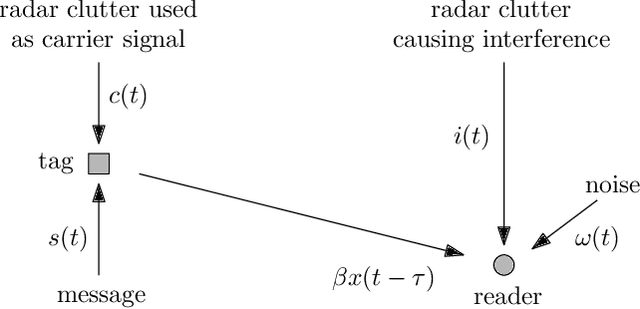


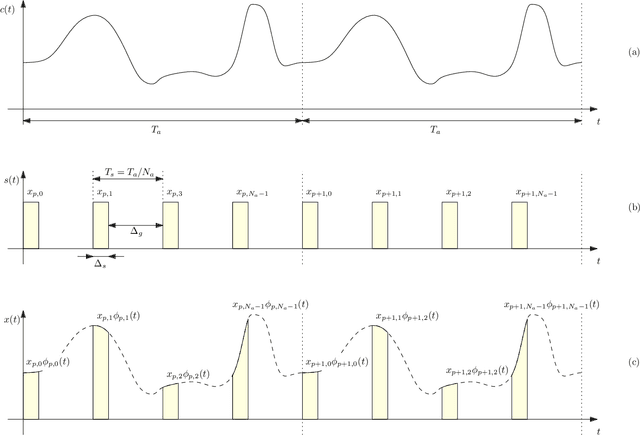
Abstract:In this work, we exploit the radar clutter (i.e., the ensemble of echoes generated by the terrain and/or the surrounding objects in response to the signal emitted by a radar transmitter) as a carrier signal to enable an ambient basckscatter communication from a source (tag) to a destination (reader). Upon deriving a convenient signal model, we exploit the fact that the radar clutter is periodic over time scales shorter than the coherence time of the environment, because so is the radar excitation, to distinguish the message sent by the tag from the superimposed ambient interference. In particular, we propose two encoding/decoding schemes that do not require any coordination with the radar transmitter or knowledge of the radar waveform. Different tradeoffs in terms of transmission rate and error probability can be obtained upon changing the control signal driving the tag switch or the adopted encoding rule; also, multiple tags can be accommodated with either a sourced or an unsourced multiple access strategy.
MIMO OFDM Dual-Function Radar-Communication Under Error Rate and Beampattern Constraints
Aug 24, 2021
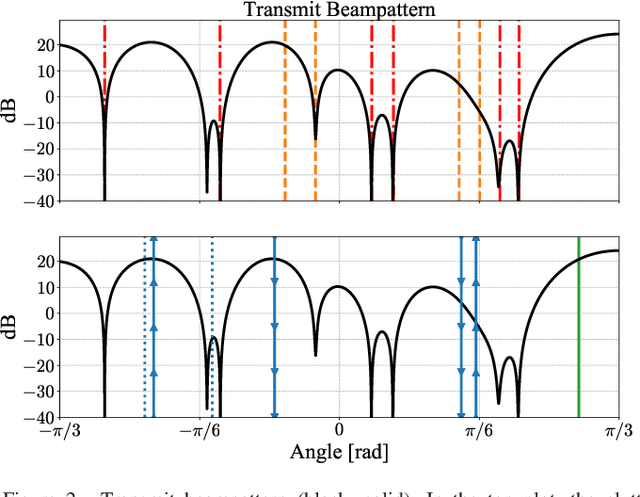
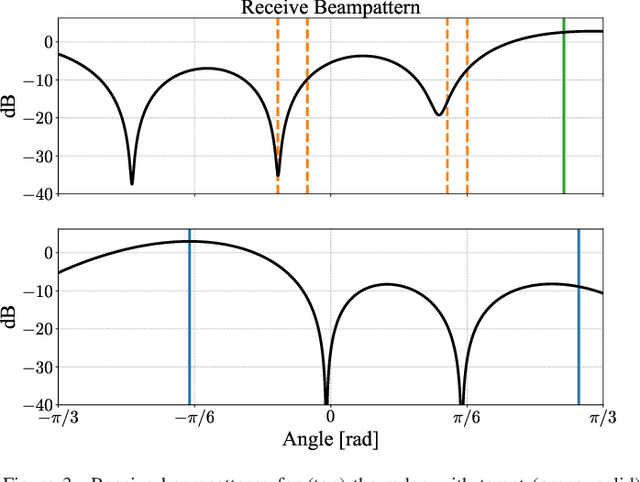
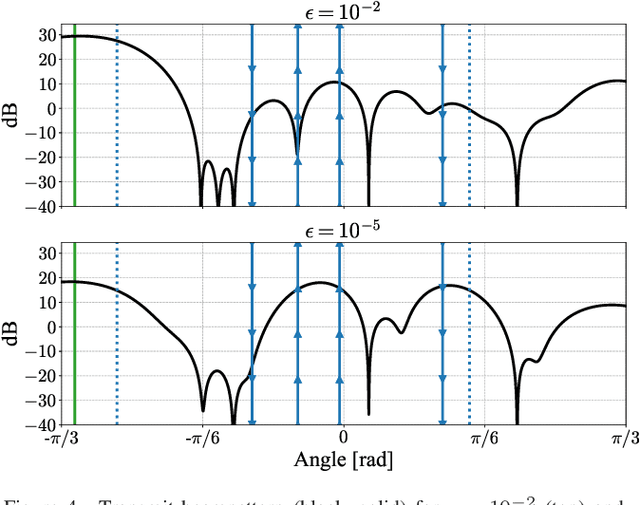
Abstract:In this work we consider a multiple-input multiple-output (MIMO) dual-function radar-communication (DFRC) system that employs an orthogonal frequency division multiplexing (OFDM) and a differential phase shift keying (DPSK) modulation, and study the design of the radiated waveforms and of the receive filters employed by the radar and the users. The approach is communication-centric, in the sense that a radar-oriented objective is optimized under constraints on the average transmit power, the power leakage towards specific directions, and the error rate of each user, thus safeguarding the communication quality of service (QoS). We adopt a unified design approach allowing a broad family of radar objectives, including both estimation- and detection-oriented merit functions. We devise a suboptimal solution based on alternating optimization of the involved variables, a convex restriction of the feasible search set, and minorization-maximization, offering a single algorithm for all of the radar merit functions in the considered family. Finally, the performance is inspected through numerical examples.
 Add to Chrome
Add to Chrome Add to Firefox
Add to Firefox Add to Edge
Add to Edge